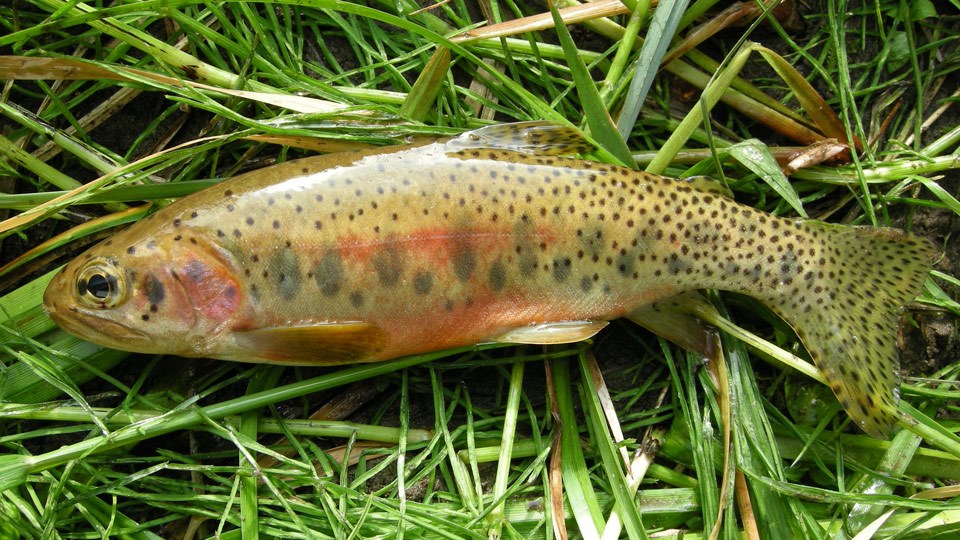
NPS/Todd Koel Historically the most abundant and widely distributed subspecies of cutthroat trout, the westslope cutthroat trout (Onchorhynchus clarkii lewisi, WCT) occupies less than 5% of its former range in the upper Missouri River drainage. It evolved from a common ancestor of the Yellowstone subspecies, and shares their food and habitat requirements. By the 1930s, WCT were nearly eliminated from park streams because of the stocking of competing trout (nonnative brook and brown trout) and interbreeding with Yellowstone cutthroat trout and nonnative rainbow trout. Restoration actions by the NPS, USFWS, MTFWP, and Turner Enterprises, have restored WCT in dozens of stream miles and expanded its range to include several historically fishless lakes (High, Goose, Wolf, and Grebe lakes). 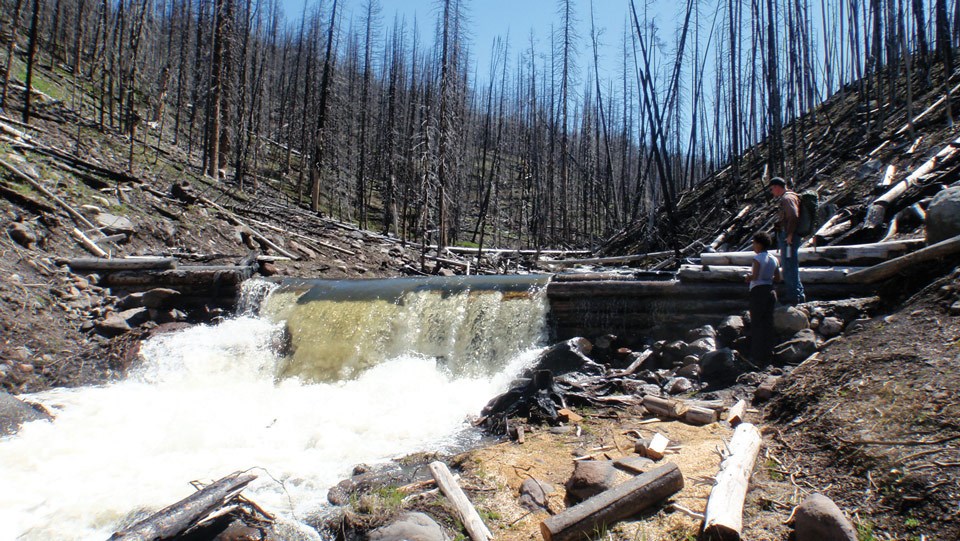
NPS RestorationNative species restoration depends on secure brood sources. A brood should be accessible, safe from contamination, self-sustaining, genetically diverse, abundant, of traceable origin, and pose no risk to existing wild populations. In the park, genetically pure WCT only persisted in one tributary in the Madison River drainage (now called Last Chance Creek), and in the Oxbow/Geode Creek complex where they were introduced in the 1920s. In 2006, Yellowstone began efforts to restore WCT in East Fork Specimen Creek and introduce them into High Lake by constructing a fish barrier, removing nonnative fish, and stocking genetically pure WCT. In 2016 and 2018, surveys conducted throughout East Fork Specimen Creek indicated a naturally reproducing population of WCT, with all fish appearing healthy. Unfortunately research in 2019 revealed that hybridized fish have moved upstream of the constructed barrier, threatening the restored portion of the creek. The long-term goal for this watershed is to integrate East Fork Specimen Creek into a larger WCT restoration project that includes the North Fork to improve the resilience of this isolated population to natural threats. In 2021, the lower reaches of the East Fork Specimen Creek were chemically treated to remove all hybridized fish from this section of stream. A range expansion project was conducted in Goose Lake and two other small, historically fishless lakes in the Firehole drainage. Nonnative fish removal was conducted in 2011 and staff stocked fry from 2013 to 2015. The long-term project goal is to one day use this pure WCT population as a brood source, providing offspring for restoration projects elsewhere within the upper Missouri River system. While WCT have been found in Goose Lake in low numbers, stocking efforts in the other two lakes have proven unsuccessful. Another range expansion project is the upper Gibbon River. In 2017, native fish restoration began on the upper portion of Gibbon River, above Virginia Cascades. This project encompasses more than 21 stream miles and 232 lake acres (Wolf, Grebe, and Ice lakes). Since fall of 2017, park biologists have introduced approximately 75,000 WCT and 170,000 Arctic grayling to Wolf, Grebe, and Ice lakes and surrounding tributaries. Fish removal continued on the upper Gibbon River from 2018 through 2020 between Virginia Cascades and Wolf Lake. Removal of nonnative fish in this section was completed in 2020. Future restoration projects for WCT and Arctic grayling are proposed for North Fork Specimen and Cougar creeks. Once completed, native fish will be restored to an additional 61 km of stream waters. ResourcesBaril, L.M., D.W. Smith, T. Drummer, and T.M. Koel. 2013. Implications of cutthroat trout declines for breeding opsreys and bald eagles at Yellowstone Lake. Journal of Raptor Research 47(3): 234–245. Bigelow, P.E., T.M. Koel, D. Mahony, B. Ertel, B. Rowdon, and S.T. Olliff. 2003. Protection of native Yellowstone cutthroat trout in Yellowstone Lake, Yellowstone National Park, Wyoming, Edited by US Department of the Interior, National Park Service. Fort Collins, CO: National Park Service, Water Resources Division. Gresswell, R.E. and J.D. Varley. 1988. Effects of a century of human influence on the cutthroat trout of Yellowstone Lake. In R.E. Gresswell, ed., Status and management of interior stocks of cutthroat trout, 45–52. Vol. Symposium 4. American Fisheries Society. Gresswell, R.E., W.J. Liss, and G.L. Larson. 1994. Lifehistory organization of Yellowstone cutthroat trout (Oncorhynchus clarkii bouvieri) in Yellowstone Lake. Canadian Journal of Fisheries and Aquatic Sciences 51(S1):298–309. Gresswell, R.E. 1995. Yellowstone cutthroat trout. In M. K. Young, ed., Conservation assessment for inland cutthroat trout, 36–54. Fort Collins, CO: US Forest Service, Rocky Mountain Forest and Range Experiment Station. Heckmann, R. 1994. Cutthroats and parasites: Yellowstone Lake’s complex community of fish and companion organisms. Yellowstone Science 2(3). Kerkvliet, J., C. Nowell, and S. Lowe. The economic value of a predator: Yellowstone trout. In A. P. Curlee, A. Gillesberg and D. Casey, ed., Greater Yellowstone predators: Ecology and conservation in a changing landscape: Proceedings of the third biennial conference on the Greater Yellowstone Ecosystem, 143–150. Yellowstone National Park, WY: Northern Rockies Conservation Cooperative and Yellowstone National Park. Koel, T.M., P.E. Bigelow, P.D. Doepke, B.D. Ertel, and D.L. Mahony. 2005. Nonnative lake trout result in Yellowstone cutthroat trout decline and impacts to bears and anglers. Fisheries 30(11):10–19. Koel, T.M., P.E. Bigelow, P.D. Doepke, B.D. Ertel, and D.L. Mahoney. 2006. Conserving Yellowstone cutthroat trout for the future of the Greater Yellowstone Ecosystem: Yellowstone’s Aquatic Sciences Program. Yellowstone Science 14(2). Koel, T.M., D.L. Mahony, K.L. Kinnan, C. Rasmussen, C.J. Hudson, S. Murcia, and B.L. Kerans. 2006. Myxobolus cerebralis in native cutthroat trout of the Yellowstone Lake ecosystem. Journal of Aquatic Animal Health 18(3):157–175. May, B.E., W. Urie, and B.B. Shepard. 2003. Range-wide status of Yellowstone cutthroat trout (Oncorhynchus clarkii bouvieri): 2001, Edited by US Forest Service, Montana Fish, Wildlife and Parks, Montana Cooperative Fishery Research Unit. Bozeman, MT. National Park Service, Yellowstone National Park. 2010. Native Fish Conservation Plan / Environmental Assessment, Edited by Department of the Interior. Yellowstone Center for Resources. Reinhart, D.P., S.T. Olliff, and K.A. Gunther. Managing bears and developments on cutthroat spawning streams in Yellowstone National Park. In A.P. Curlee, A. Gillesberg and D. Casey, ed., Greater Yellowstone predators: Ecology and conservation in a changing landscape: Proceedings of the third biennial conference on the Greater Yellowstone Ecosystem, 161–169. Yellowstone National Park, WY: Northern Rockies Conservation Cooperative and Yellowstone National Park. Varley, J.D. and P. Schullery. 1995. The Yellowstone Lake crisis: Confronting a lake trout invasion: a report to the director of the National Park Service. Yellowstone National Park, WY: National Park Service, Yellowstone Center for Resources. Yellowstone Center for Resources. 2009. Yellowstone cutthroat trout: Conserving a heritage population in Yellowstone Lake, YCR-2009-02. Mammoth Hot Springs, WY: National Park Service. 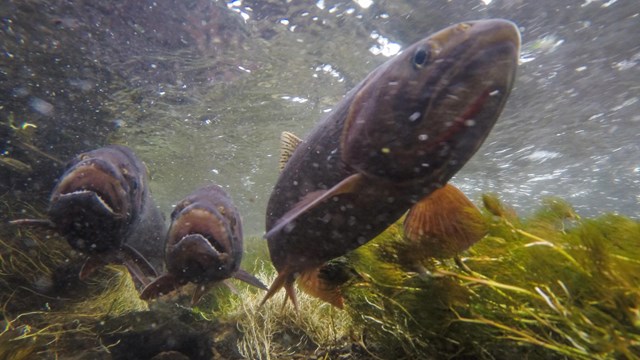
Yellowstone Cutthroat Trout
Yellowstone cutthroat trout are the most widespread native fish in the park. 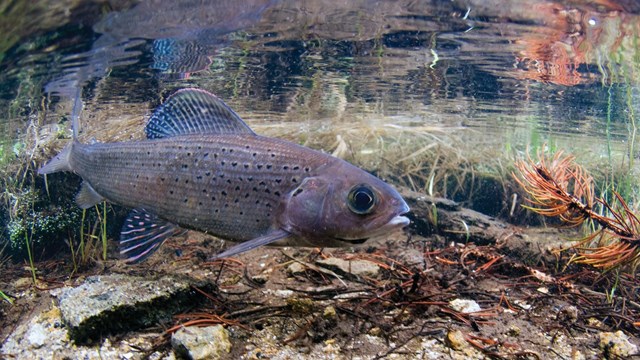
Arctic Grayling
Making a comeback due to park restoration efforts. 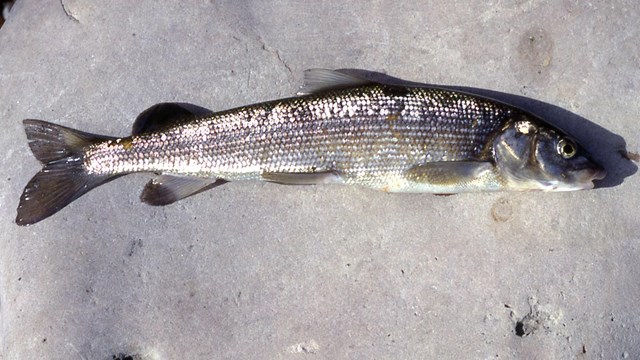
Mountain Whitefish
Lives in rivers and streams with deep pools, clear and clean water. 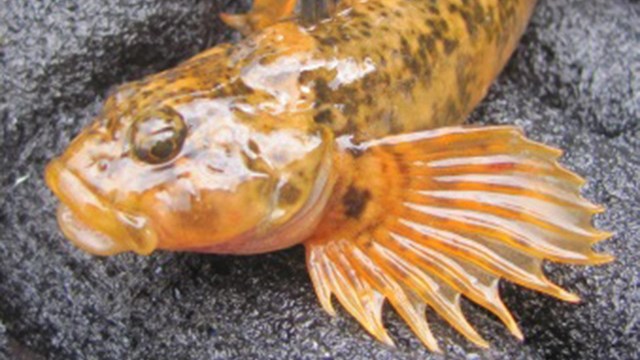
Mottled Sculpin
Mottled sculpin live in shallow, cold water throughout Yellowstone except the Yellowstone River above Lower Falls and in Yellowstone Lake. 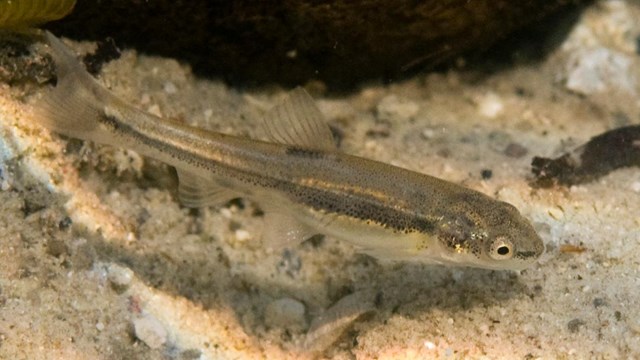
Minnows
Yellowstone’s minnows are small fish living in a variety of habitats and eating a variety of foods. 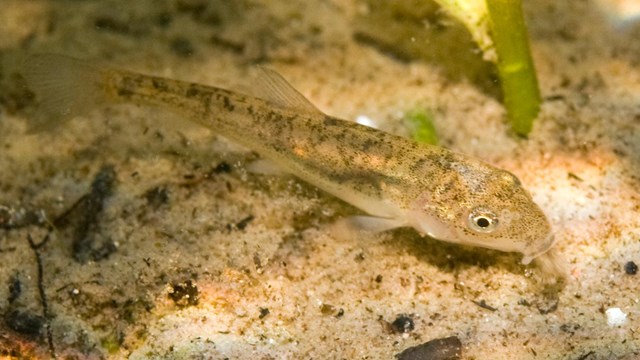
Suckers
Suckers are bottom-dwelling fish that use ridges on their jaws to scrape flora and fauna from rocks. 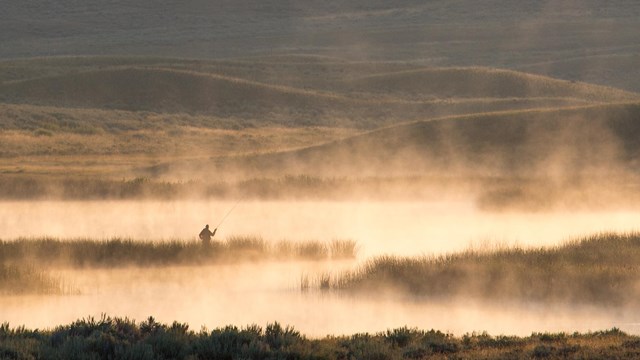
Catch a Fish
Be a responsible angler and understand the regulations before you come. 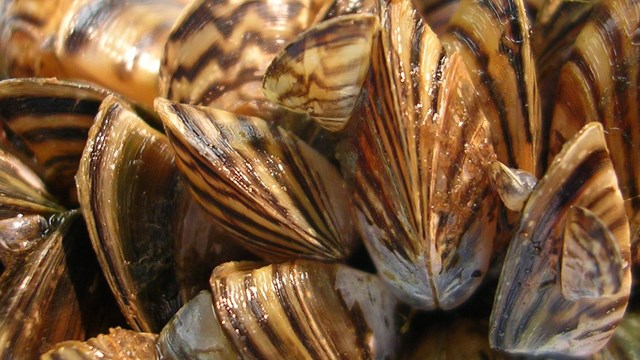
Clean, Drain & Dry
Prevent damaging aquatic invasive species from reaching Yellowstone. 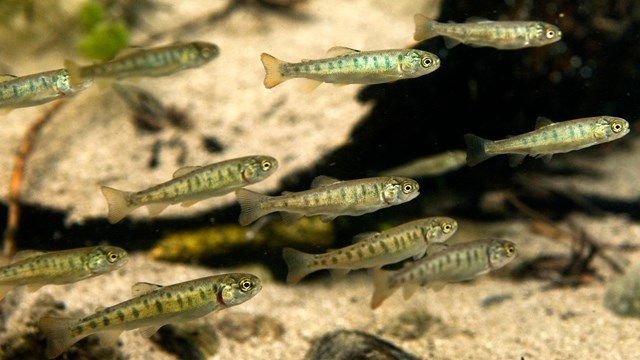
Native Fish Conservation Program
Learn how the Native Fish Conservation Program works to preserve Yellowstone Lake cutthroat trout and to restore fluvial trout populations. 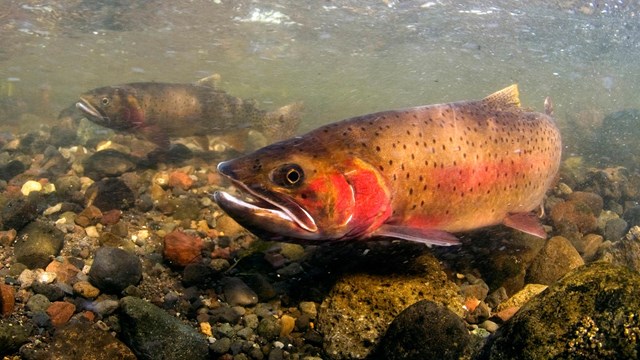
Native Fish Species
Native fish underpin natural food webs and have great local economic significance. |
Last updated: May 8, 2023
